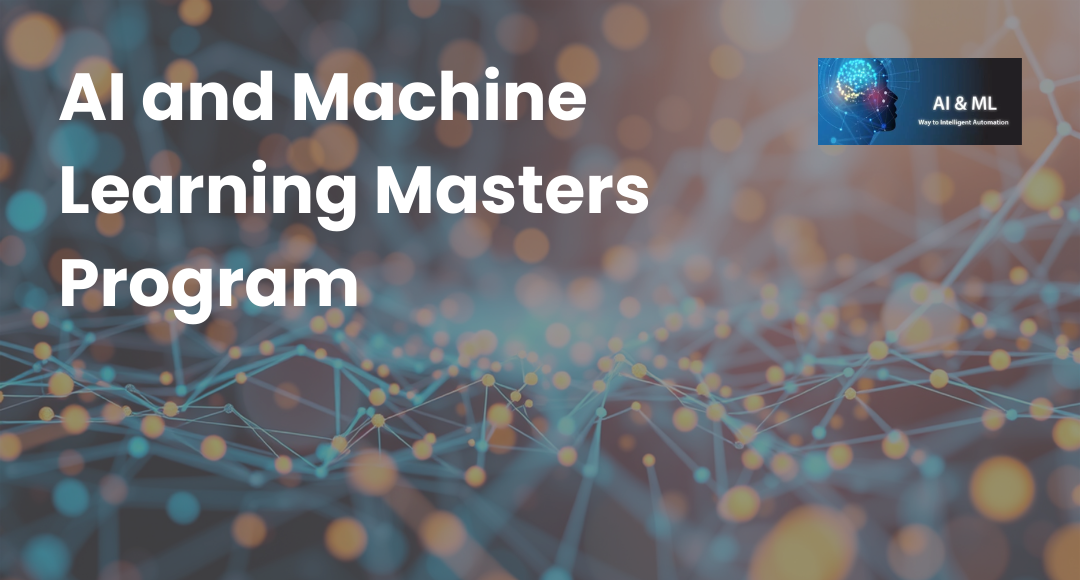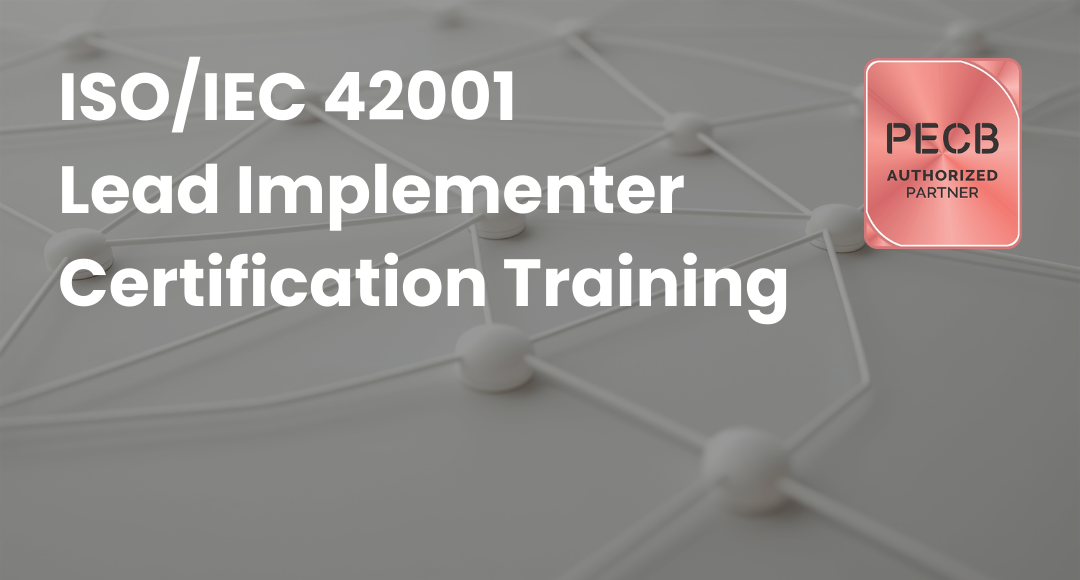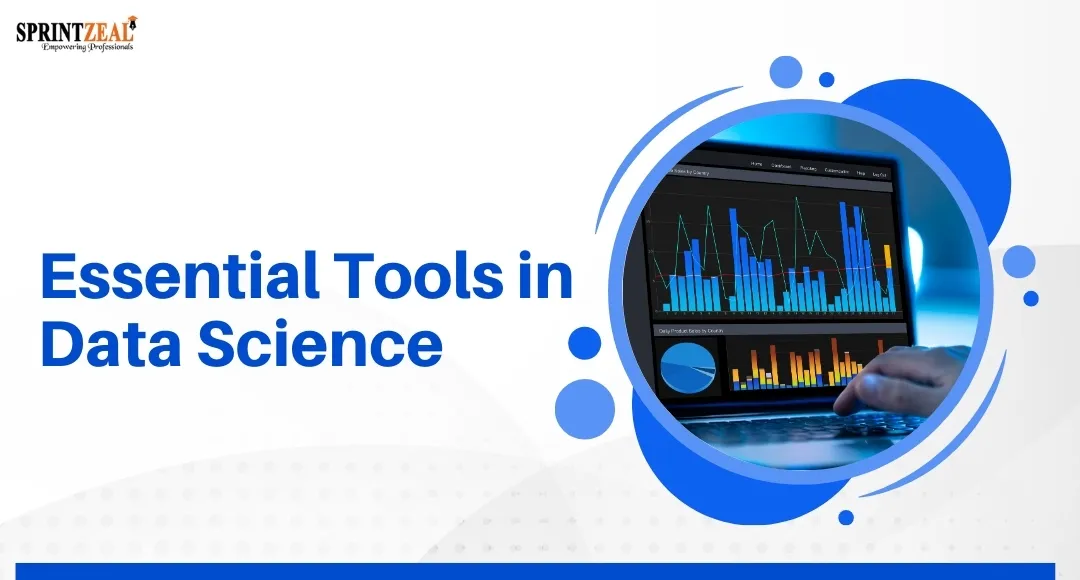Future of Quality Management: Role of Generative AI in Six Sigma and Beyond
-
 By Sprintzeal
By Sprintzeal - Published on Apr 24 2025

Generative AI is rapidly redefining how organizations approach Six Sigma and overall quality management by automating data analysis, generating test artifacts, and enabling predictive corrective actions. Leading studies estimate that AI-driven process improvements could contribute trillions to the global economy and boost productivity by up to 60%.
By embedding AI capabilities into each DMAIC phase—Define, Measure, Analyze, Improve, Control—companies can shorten defect cycles, optimize resource allocation, and achieve continuous improvement at scale. Real-world implementations in manufacturing and healthcare have demonstrated up to a 30% reduction in project timelines and significant gains in process capability indices.
Integrating AI with modern automation frameworks—such as the playwright testing tool—further amplifies testing reliability and accelerates delivery within DevOps pipelines.
As organizations prepare for “Beyond Six Sigma,” they must address data governance, change management, and ethical AI use to fully unlock generative AI’s promise.
Table of Contents
- Introduction to Quality Management and Six Sigma
- The Evolution of Generative AI in Quality Assurance
- Integrating Generative AI with the DMAIC Framework
- Key Benefits of Generative AI in Six Sigma
- Real-World Case Studies
- Implementing Generative AI in Your Quality Strategy
- Leveraging Playwright in an AI-Driven QA Pipeline
- Challenges and Mitigation Strategies
- Future Outlook: Beyond Six Sigma
- Conclusion
Introduction to Quality Management and Six Sigma
Quality Management (QM) is a structured discipline aimed at ensuring products and services consistently meet customer requirements while minimizing waste and variation. Six Sigma, pioneered by Motorola in the 1980s, builds on QM by applying statistical methods and a DMAIC (Define, Measure, Analyze, Improve, Control) framework to systematically eliminate defects and reduce process variability.
Over the past four decades, Six Sigma has become a cornerstone of operational excellence programs across manufacturing, healthcare, finance, and service industries. Despite its success, traditional Six Sigma initiatives often rely heavily on manual data collection, expert-led root cause analysis, and time-consuming pilot tests, limiting agility in fast-changing environments.
However, the rise of advanced analytics and machine learning has begun to augment Six Sigma, enabling teams to process massive datasets, detect subtle patterns, and predict outcomes with higher accuracy than ever before.
Generative AI—a subset of artificial intelligence that creates novel content based on learned patterns—promises to further transform QM by automating routine tasks, generating test cases, and proposing optimized process adjustments in real time.
Organizations exploring generative ai services can streamline defect detection and process optimization far beyond the capabilities of traditional quality tools.
This article explores how organizations can integrate generative AI into Six Sigma, harness its key benefits, address implementation challenges, and look ahead to an AI-augmented future of quality management.
The Evolution of Generative AI in Quality Assurance
Generative AI models, such as transformer-based large language models, are trained on vast corpora to understand and generate human-like text, code, and data. In quality assurance (QA), these models can automatically produce realistic test scripts, generate synthetic data test, and draft detailed audit documentation—tasks that traditionally consumed significant manual effort.
By analyzing historical defect logs and process metrics, AI can identify defect-prone modules, predict failure modes, and recommend targeted test scenarios, thereby improving coverage and reducing flaky tests.
One practical application is leveraging generative ai in software testing to auto-generate end-to-end test cases that adapt to UI changes, self-heal broken scripts, and integrate with CI/CD pipelines. Early adopters report up to a 50% reduction in test maintenance time and a 40% increase in test throughput when combining AI-driven test generation with conventional automation frameworks.
As generative AI continues to mature, QA teams can shift focus from repetitive scripting to strategic analysis and continuous improvement initiatives.
Integrating Generative AI with the DMAIC Framework
Generative AI maps naturally onto Six Sigma’s DMAIC phases, enhancing each step with automation and predictive insights:
Define & Measure
In the Define phase, AI-powered natural language processing can parse project charters, customer feedback, and requirement specifications to automatically identify scope, critical-to-quality (CTQ) attributes, and stakeholder priorities.
During Measure, machine learning algorithms ingest sensor data, logs, and transactional records to establish baseline performance metrics and detect hidden process variations at unprecedented speed.
Analyze
Root cause analysis is accelerated through unsupervised learning techniques—such as clustering and anomaly detection—that spotlight statistically significant correlations across multi-dimensional datasets, freeing Black Belts from manual Pareto charting and fishbone diagramming.
AI-driven tools can also simulate counterfactual scenarios (“what-if” analyses) to evaluate the impact of potential process changes before physical trials.
Improve
Generative models can propose optimized process parameters by simulating thousands of design-of-experiment (DOE) variations, recommending the combination that maximizes yield or minimizes defect rates.
For example, in pharmaceutical manufacturing, AI-generated DOEs have reduced experimental runs by 30% while achieving target quality metrics.
Control
AI-enabled monitoring systems continuously track key process indicators, issuing real-time alerts and prescriptive actions if deviations occur.
By embedding anomaly detection into control plans, teams can ensure process stability and trigger immediate corrective workflows without manual intervention.
Key Benefits of Generative AI in Six Sigma
1. Accelerated Cycle Times:
AI-driven data analysis and simulation can cut DMAIC project timelines by up to 30%, enabling faster go-to-market for products and services.
2. Enhanced Predictive Analytics:
Leveraging historical data, AI agents predicts process performance and defect likelihood with 90%+ accuracy, allowing proactive issue resolution.
3. Resource Optimization:
Automated test generation and report drafting free skilled practitioners to focus on strategic improvement rather than repetitive tasks.
4. Scalable Continuous Improvement:
Autonomous AI agents can run ongoing experiments and refine processes in production environments, fostering a culture of never-ending optimization.
Collectively, these benefits translate into higher customer satisfaction, lower operational costs, and stronger competitive positioning in dynamic markets.
Real-World Case Studies
Manufacturing: Prescriptive Process Control
A global chemical manufacturer integrated generative AI with Six Sigma to monitor multi-stage reactors in real time. AI algorithms analyzed sensor streams to predict potential deviations and suggested corrective parameter adjustments, improving process capability (Cp and Cpk) by 15% and reducing yield losses by 12%.
Teams reported a 20% reduction in unplanned downtime and a 25% increase in overall equipment effectiveness (OEE).
Healthcare: Automated Compliance Documentation
A leading healthcare services provider deployed generative AI to draft and review quality and regulatory documents—ranging from audit reports to training materials—aligned with ISO 13485 and FDA regulations.
Datagrid AI Automation cut document preparation time by 40% while maintaining full compliance, enabling the quality team to reallocate efforts toward data-driven process enhancements.
These case studies demonstrate that when generative AI complements Six Sigma, organizations can achieve measurable improvements in both efficiency and quality.
Implementing Generative AI in Your Quality Strategy
1. Data Governance & Preparation:
Establish robust pipelines for reliable, clean data. Implement data lineage and version control to ensure AI models train on accurate, representative datasets.
2. Model Selection & Validation:
Choose architectures (e.g., regression, tree-based, transformer models) aligned with project objectives. Rigorously validate models using hold-out data and cross-validation techniques to prevent overfitting.
3. Toolchain Integration:
Embed AI outputs into existing Six Sigma tools—such as Minitab, JMP, or proprietary dashboards—via APIs or low-code connectors to maintain familiar workflows.
4.Change Management & Training:
Upskill stakeholders on AI fundamentals, foster transparent communication about AI decision-making, and run pilot projects to build trust before full-scale rollout.
A phased approach—starting with high-impact, low-risk applications—minimizes disruption and accelerates time to value. Organizations seeking to build custom AI solutions can leverage specialized gen AI development services to create tailored models that align with their specific quality management requirements.
Leveraging Playwright in an AI-Driven QA Pipeline
To validate AI-generated test cases within production-like environments, QA teams can adopt the playwright testing tool—an end-to-end framework from Microsoft that supports cross-browser automation, parallel execution, and CI/CD integration.
Playwright’s real-browser input simulation ensures AI-crafted scripts behave consistently across Chromium, Firefox, and WebKit contexts. Its trace viewer and test generator features allow teams to record user journeys and debug flaky tests interactively, complementing generative AI’s self-healing capabilities.
By integrating Playwright into AI-powered QA workflows, organizations achieve higher reliability and faster feedback loops, essential for modern DevOps cycles.
Challenges and Mitigation Strategies
Model Hallucination & Irrelevance:
Generative AI may produce inaccurate or irrelevant outputs. Mitigation involves establishing human-in-the-loop review gates and implementing guardrails through prompt engineering and fine-tuning.
Compute & Infrastructure Costs:
Training large models demands significant compute resources. Organizations can leverage cloud-based GPU/TPU instances or opt for smaller, distilled models to balance performance and cost.
Cultural Resistance:
Shifting from manual to AI-augmented processes may face pushback. Address this through clear communication, demonstration of quick wins, and ongoing training programs.
Proactive mitigation ensures AI adoption strengthens—rather than disrupts—existing quality frameworks.
Future Outlook: Beyond Six Sigma
Looking ahead, quality management will evolve into an adaptive, AI-driven discipline where continuous learning loops and digital twins enable self-correcting systems.
“Zero-Defect AI” models may autonomously detect and resolve anomalies before they impact production, shifting QA from reactive to prescriptive and preventive modes.
Organizations that embrace this paradigm will not only optimize existing processes but also unlock novel business models centered on real-time quality intelligence.
Conclusion
Generative AI represents a transformative force for Six Sigma and quality management, automating data-intensive tasks, generating intelligent test artifacts, and enabling predictive, continuous improvement.
By thoughtfully integrating AI into the DMAIC framework and leveraging complementary tools like Playwright, organizations can achieve faster cycle times, higher quality outcomes, and sustainable competitive advantage.
Addressing implementation challenges through robust governance and change management will be critical to realizing AI’s full potential—and setting the stage for an AI-augmented era “beyond Six Sigma.”
Subscribe to our Newsletters
Popular Programs
Trending Posts
Best Prompt Engineering Tools to Master AI Interaction and Content Generation
Last updated on Oct 16 2025
Best Tools to Convert Images into Videos
Last updated on Apr 17 2025
Guide to Implementing AI Solutions in Compliance with ISO/IEC 42001
Last updated on Jul 31 2024
Machine Learning Regularization - An Overview
Last updated on Jan 5 2024
Essential Tools in Data Science for 2026
Last updated on Dec 16 2025
Machine Learning Cheat Sheet: A Brief Beginner’s Guide
Last updated on May 31 2024
Categories
- Other 68
- Agile Management 48
- Cloud Computing 53
- Project Management 171
- Big Data 65
- Business Management 86
- Digital Marketing 76
- IT Service Management 29
- Programming Language 57
- AI and Machine Learning 73
- IT Security 110
- Quality Management 78
- IT Hardware and Networking 25
- Microsoft Program 4
- Workplace Skill Building 12
- Risk Management 9
- Information Security 8
- Leadership and Management 7
- Corporate Training and Development 1
Trending Now
Consumer Buying Behavior Made Easy in 2026 with AI
Article7 Amazing Facts About Artificial Intelligence
ebookMachine Learning Interview Questions and Answers 2026
ArticleHow to Become a Machine Learning Engineer
ArticleData Mining Vs. Machine Learning – Understanding Key Differences
ArticleMachine Learning Algorithms - Know the Essentials
ArticleMachine Learning Regularization - An Overview
ArticleMachine Learning Regression Analysis Explained
ArticleClassification in Machine Learning Explained
ArticleDeep Learning Applications and Neural Networks
ArticleDeep Learning vs Machine Learning - Differences Explained
ArticleDeep Learning Interview Questions - Best of 2026
ArticleFuture of Artificial Intelligence in Various Industries
ArticleMachine Learning Cheat Sheet: A Brief Beginner’s Guide
ArticleArtificial Intelligence Career Guide: Become an AI Expert
ArticleAI Engineer Salary in 2026 - US, Canada, India, and more
ArticleTop Machine Learning Frameworks to Use
ArticleData Science vs Artificial Intelligence - Top Differences
ArticleData Science vs Machine Learning - Differences Explained
ArticleCognitive AI: The Ultimate Guide
ArticleTypes Of Artificial Intelligence and its Branches
ArticleWhat are the Prerequisites for Machine Learning?
ArticleWhat is Hyperautomation? Why is it important?
ArticleAI and Future Opportunities - AI's Capacity and Potential
ArticleWhat is a Metaverse? An In-Depth Guide to the VR Universe
ArticleTop 10 Career Opportunities in Artificial Intelligence
ArticleExplore Top 8 AI Engineer Career Opportunities
ArticleA Guide to Understanding ISO/IEC 42001 Standard
ArticleNavigating Ethical AI: The Role of ISO/IEC 42001
ArticleHow AI and Machine Learning Enhance Information Security Management
ArticleGuide to Implementing AI Solutions in Compliance with ISO/IEC 42001
ArticleThe Benefits of Machine Learning in Data Protection with ISO/IEC 42001
ArticleChallenges and solutions of Integrating AI with ISO/IEC 42001
ArticleFuture of AI with ISO 42001: Trends and Insights
ArticleTop 15 Best Machine Learning Books for 2026
ArticleTop AI Certifications: A Guide to AI and Machine Learning in 2026
ArticleHow to Build Your Own AI Chatbots in 2026?
ArticleGemini Vs ChatGPT: Comparing Two Giants in AI
ArticleThe Rise of AI-Driven Video Editing: How Automation is Changing the Creative Process
ArticleHow to Use ChatGPT to Improve Productivity?
ArticleTop Artificial Intelligence Tools to Use in 2026
ArticleHow Good Are Text Humanizers? Let's Test with An Example
ArticleBest Tools to Convert Images into Videos
ArticleIntegrating AI to Personalize the E-Commerce Customer Journey
ArticleHow Text-to-Speech Is Transforming the Educational Landscape
ArticleAI in Performance Management: The Future of HR Tech
ArticleAre AI-Generated Blog Posts the Future or a Risk to Authenticity?
ArticleExplore Short AI: A Game-Changer for Video Creators - Review
Article10 Undetectable AI Writers to Make Your Content Human-Like in 2026
ArticleHow AI Content Detection Will Change Education in the Digital Age
ArticleWhat’s the Best AI Detector to Stay Out of Academic Trouble?
ArticleAudioenhancer.ai: Perfect for Podcasters, YouTubers, and Influencers
ArticleHow AI is quietly changing how business owners build websites
ArticleMusicCreator AI Review: The Future of Music Generation
ArticleHumanizer Pro: Instantly Humanize AI Generated Content & Pass Any AI Detector
ArticleBringing Your Scripts to Life with CapCut’s Text-to-Speech AI Tool
ArticleHow to build an AI Sales Agent in 2026: Architecture, Strategies & Best practices
ArticleRedefining Workforce Support: How AI Assistants Transform HR Operations
ArticleTop Artificial Intelligence Interview Questions for 2026
ArticleHow AI Is Transforming the Way Businesses Build and Nurture Customer Relationships
ArticleBest Prompt Engineering Tools to Master AI Interaction and Content Generation
Article7 Reasons Why AI Content Detection is Essential for Education
ArticleTop Machine Learning Tools You Should Know in 2026
ArticleMachine Learning Project Ideas to Enhance Your AI Skills
ArticleWhat Is AI? Understanding Artificial Intelligence and How It Works
ArticleHow Agentic AI is Redefining Automation
ArticleThe Importance of Ethical Use of AI Tools in Education
ArticleFree Nano Banana Pro on ImagineArt: A Guide
ArticleDiscover the Best AI Agents Transforming Businesses in 2026
ArticleEssential Tools in Data Science for 2026
ArticleLearn How AI Automation Is Evolving in 2025
ArticleGenerative AI vs Predictive AI: Key Differences
Article









